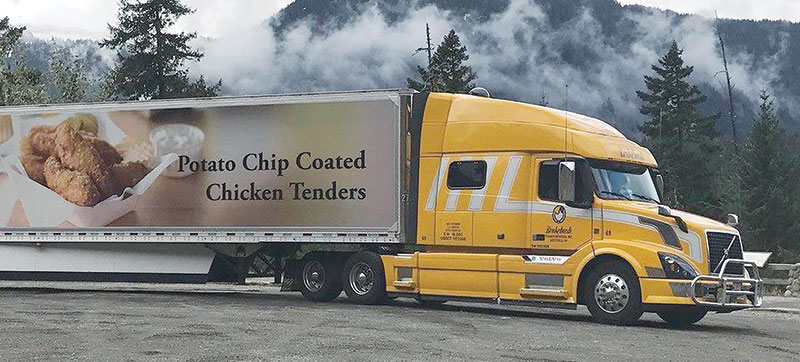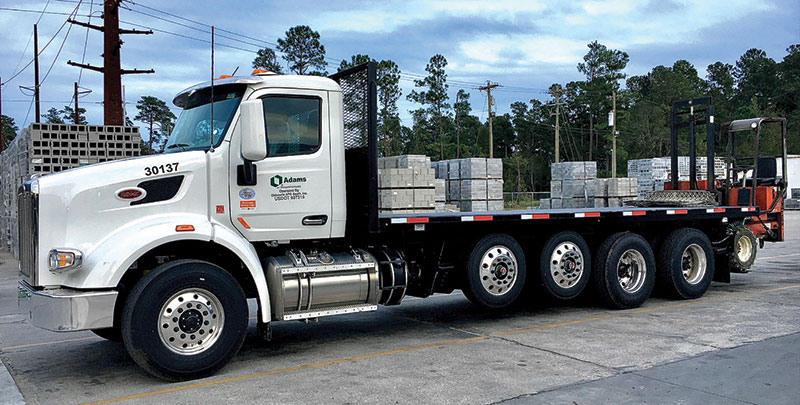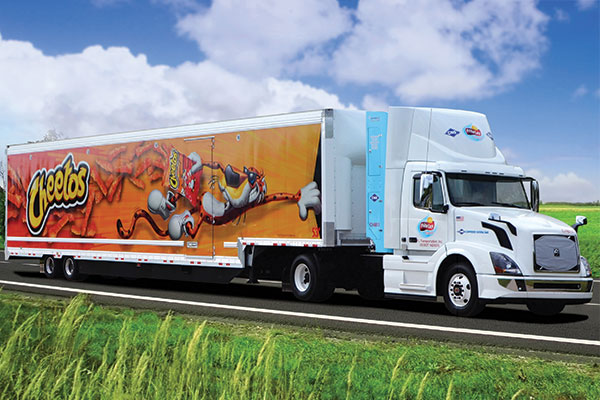Private Fleets 2021: Still creating competitive advantage
While not cheap, top-flight customer service is driving more companies toward private fleets in a tight trucking capacity market, while shrewd operators learn to adapt and improvise on the fly to create value for their organizations.
PepsiCo, Sysco, Walmart, Haliburton and Tyson Foods are household names in America, and they all run successful private trucking fleets. An often-overlooked sector of the $700 billion overall trucking industry, the private-fleet niche accounts for roughly one-half of that market, or 48.1%—a share that would place private fleet annual revenue at nearly $350 billion.
So, what does that private fleet market look like as we’re rolling through recovery? According to FleetSeek.com, a proprietary database of trucking operations, there are 344,657 private fleets currently operating in the United States—compared to 169,498 for-hire carriers and 203,068 independent owner operators. And while the vast majority of all trucking operators are very small fleets—with fewer than 10 trucks—all three categories of trucking are on a growth path for 2021.
While National Private Truck Council (NPTC) members range from small to large, they typically average nearly 300 drivers, tractors and straight trucks; have just shy of 1,000 trailers; and operate out of 41 terminal locations. So, in an era of complex transportation solutions and operations, what’s driving companies to increase or decrease their private fleet capacity? Two key words to remember are “service” and “capacity.”
According to the NPTC, private fleets are increasing their capacity for three major reasons:
- to meet increased consumer demand for their products;
- to maintain high levels of customer service; and
- to mitigate transportation costs by further expanding the private fleet and reducing dependence on outside carriers charging ever-higher rates.
The NPTC says that where private fleets are decreasing capacity, the primary reasons are change or reduction in business volume or a merger with a larger company that uses only outside carriers. However, private fleets are uniquely stable and dependable in the long-term compared with their for-hire competition.
While there is always movement back and forth from private to for-hire carriage, private fleet operators say that the momentum is generally more on the private fleet side in this era of tight capacity. Dollar General, for example, recently citing rising for-hire trucking rates, said it was expanding its private fleet to more than 700 power units and more than 550 drivers. That fleet, which began in 2016, handles about 13% of its inbound transportation and 48% of outbound.
“Both private and dedicated fleets are growing,” says Gary Petty, NPTC president and CEO. He says that both outbound and inbound shipments, as percentages performed by private fleets, have grown over the years—now averaging 67% for outbound and 44% inbound.
“The most common explanation for outsourcing the entire private fleet to a dedicated fleet involves a merger or acquisition where the new owner, having no private fleet of their own, simply dissolves the acquired company’s private fleet and absorbs its capacity into the existing network of its dedicated carrier,” Petty explains. “It’s a business decision, plain and simple, and usually not due to an inherent problem with the private fleet itself.”
Let’s explore the reasons that companies choose to operate their own fleets, the market uncertainties they may face, and the operational realities they encounter to ensure that they have enough capacity in the hyper-tight trucking market place of 2021.
Why go private?
As in years past, the primary reason cited by companies operating a private fleet is “to provide exceptional levels of customer service that’s unavailable on the open market,” especially when transportation and logistics capacity is constrained.
Leasing options popular with private fleets
According to the National Private Truck Council’s benchmarking survey, private fleets that rely primarily on leasing as an acquisition strategy had several distinct advantages as compared to those fleets that prefer ownership:
- They turned their heavy-duty power equipment far more quickly—an average of 5.5 years versus 7.1 years.
- They tended to put more miles on the units, an average of 15,500 more for their heavy-duty power. Leased fleets averaged 102,200 miles compared to an average of 86,600 miles a year for owned fleets.
- Those fleets that leased their power equipment were more prone to leasing trailers compared to fleets that preferred ownership by 72% to 6% margin.
- Those fleets that preferred leasing—and thus outsource more of their maintenance spend—had a lower breakdown percentage (3.18%) compared to fleets in an ownership position that lean towards in-house maintenance.
- From a turnover perspective, private fleets in an ownership position experienced a driver turnover rate that was 2/3 that of the leased fleets—14% versus 21%.
- And leased fleets also provided companies with a slight cost advantage—$2.73/mile versus the $3.00/mile for fleets in an ownership position.
At its baseline, textbook definition, operating a private fleet provides control over service levels, guarantees capacity availability and ensures cost-competitive transportation alternatives regardless of market conditions.
In the most recent NPTC benchmarking survey, more than 92% of the respondents said that “customer service” was the primary reason they operate a private fleet. Other factors swinging executives toward private fleets include flexibility, reliability, dependability and a desire to put company employees in front of the customer to build access and security, according to the survey.
Interestingly, several respondents went a step further, reporting that their private fleet was viewed as a core competency. And according to the NPTC, since the survey’s inception in 2005, “customer service” has been cited by the overwhelming majority of private fleet operators “as the reason they’re in business.”
This year’s survey results revealed that private fleet practitioners continued to provide increased justification and value for operating in-house transportation, especially when compared to using alternative outside transportation services.
For shippers with private fleets, the survey confirms that corporate transportation is a high priority and a key component of company success. According to the 2021 respondents, transportation is embraced as an essential in-house core competency that’s too important to be outsourced entirely to outside service providers.
“The private fleet is viewed as a competitive advantage, not merely a necessary evil, and is expected to deliver high performance at levels not available at a comparable cost, or not at all at any price, by any other means,” NPTC’s Perry explains. “The private fleet becomes a vital ingredient in the company’s business model with significant investments in talent, technology and equipment over the long haul.”

With these commitments in place, the main benefits gained from the private fleet are premium customer service; on-demand trucking capacity; cost control; benchmarking leverage; cost advantage against outside carrier services; and exceptional safety performance. And because 75% of private fleets operate as cost centers and 25% as profit centers, the priority of most is not profit, but achieving optimal premium service at the best price.
Another advantage of going to a private fleet in this tight driver market is that private fleets are three times safer than the overall trucking industry, according to Department of Transportation reportable crash data. And to top it off, private fleet driver turnover is the lowest in the industry—averaging 14.5% over the past five years—compared with over 90% driver turnover in the for-hire truckload sector.
Driver longevity with the same company averages around 10 years, the longest in the industry, and private fleet driver average pay is the highest in the industry—almost $70,000 in base salary plus 20% more in benefits. “All these factors give private fleets a huge advantage as the preferred employer in a market that’s experiencing an extreme driver shortage and fierce competition for talent acquisition,” Petty adds.
Private fleet market challenges
Most private fleets are now growing capacity. Volatile for-hire carrier rate increases, capacity shortages and now higher fuel costs during the pandemic have significantly strengthened the case for expanding the private fleet, advocates say.
Higher sales volume for shippers has underscored the need to invest further in added private fleet drivers, equipment and increased capacity. The overall increased cost of corporate transportation has put greater demands on fleet justification and cost containment, according to NPTC’s Petty.
Equipment will continue to move from ownership to leasing with quicker turn cycles, a trend which has the added benefit of acquiring new technology, and safer, greener trucks. Full-service driver leasing will inch up to augment teams of full-time employee drivers.
However, finding talent behind the wheel will be an even greater challenge as demand for quality drivers far exceeds available supply, made worse by an aging workforce. The average age of a new hire private fleet driver is 41.
And as backhaul capacity will continue to decline, a shrewd private fleet manager will continue to “right-size” the appropriate ratio of private fleet versus outside carrier contractors as percentages of total shipments.
“Shippers are doing more with fewer in-house staff,” Petty says. “This means more tasks are being shifted to external workers. Use of third-party service providers will grow, particularly in specialized tasks and compliance, while private fleets will lead the industry in the use of innovative technology and active safety features.”
For example, nearly two-thirds of private fleets now use forward and driver-facing cameras—that’s the highest utilization rate in trucking. This technology is exonerating drivers from fault in an accident while helping coach drivers to higher levels of safety performance.
Given that the driver shortage continues to haunt the trucking industry, it should come as no surprise that driver-related issues are the top concern of private fleets as well. In fact, more than one-third of all challenges cited in the NPTC benchmarking survey were driver related—an aging driver population, recruiting, turnover, hiring and retention. In fact, issues around the driver shortage were cited by a ratio of 4 to 1 as the next most pressing issue.
Rounding out the list of issues cited by fleets were cost-related issues, equipment and maintenance, customer service, regulatory and safety. To add perspective, it was just eight years ago when fuel-related issues were the top challenge confronting fleets
How to operate a private fleet in 2021
Benchmarking is the most important management tool to best assess performance of the private fleet against peer operators and national standards, private fleet managers say.
It serves as a fleet justification exercise for upper management, a scorecard for continuous improvement and an objective means by which fleet managers can introduce best practices and new protocols into their operations.

And while performance measurements are vital, the private fleet driver is the differentiated value-added feature of corporate transportation. Because the driver is on familiar routes most of the time, he or she becomes a trusted, reliable face and personality of unmatched customer service. “Retaining a quality driver for many years of service is the hallmark of excellence by which a private fleet ultimately succeeds,” says Petty.
And while expensive, a private fleet operated by a savvy, experienced transportation manager can still be a profitable enterprise. Let’s look at some of the best.
One NPTC fleet member company experienced a 9% growth in sales in 2020, but their private fleet’s cost rose only 6% while still operating at a 20% lower cost than outside carriers, proving that very slight improvements can make a huge impact. For example, one operator with a 1,200-truck fleet improved its annual miles per gallon (mpg) from 6.0 to 6.1, or 1/10th of 1 mpg. The move meant $580,000 savings for the year.
Saint Joseph, Mo.-based Hillyard Inc., a 114-year-old pioneer in cleaning and maintenance products and most famously known for wood floor finishes on basketball courts used in March Madness, recently needed to adapt procedures to cope with the pandemic.
The company produces EPA-approved cleaning disinfectants, along with hygiene solutions such as soaps and hand sanitizer. To date, Hillyard has 14 EPA-approved products to protect against COVID-19. Due those products and the adjustments the company made to operate its private fleet, the Department of Homeland Security identified Hillyard as part of the essential critical infrastructure in response to the pandemic.
In the early days of the outbreak, while other companies were shutting down and canceling deliveries, Hillyard, as a privately-owned fleet, was able to get these critical products to its customers.
So, whatever the reason for operating a private fleet, and regardless of operational challenges within that fleet, respondents in the NPTC survey reported bullish year-over-year performance of their fleet by every measure—shipments, volume and value. That makes six consecutive years of growth in shipments by private fleets.
And while private fleet managers certainly have headache-causing issues that can keep them up at night, they can take solace in knowing that they’re providing top-notch service for their customers. While not cheap, private fleets can be a long-term solution to trucking’s chronic capacity crunch.

Article Topics
Motor Freight News & Resources
Shipment and expenditure decreases trend down, notes Cass Freight Index March trucking tonnage trends down, reports ATA FTR Shippers Conditions Index enters negative territory DAT March Truckload Volume Index sees modest March gains National diesel average, for week of April 22, is down for the second straight week LM Podcast Series: Assessing the freight transportation and logistics markets with Tom Nightingale, AFS Logistics XPO opens up three new services acquired through auction of Yellow’s properties and assets More Motor FreightLatest in Logistics
Baltimore suing ship that crashed into bridge, closing port, costing jobs Intermodal growth volume remains intact in March, reports IANA Descartes announces acquisition of Dublin, Ireland-based Aerospace Software Developments Amid ongoing unexpected events, supply chains continue to readjust and adapt Shipment and expenditure decreases trend down, notes Cass Freight Index March trucking tonnage trends down, reports ATA FTR Shippers Conditions Index enters negative territory More LogisticsSubscribe to Logistics Management Magazine

Find out what the world's most innovative companies are doing to improve productivity in their plants and distribution centers.
Start your FREE subscription today.
April 2023 Logistics Management

Latest Resources
















